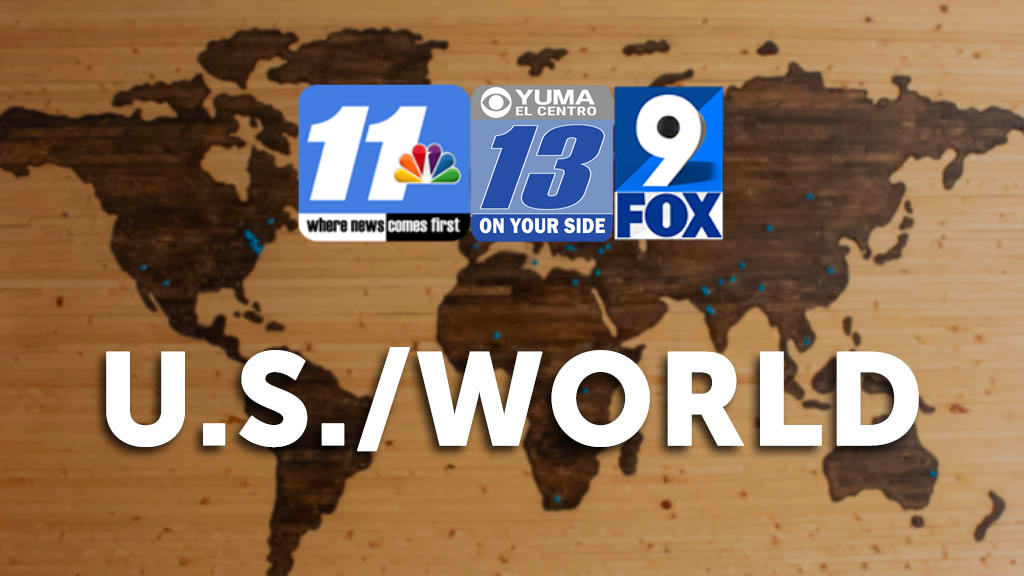Canada migrant death toll at 8 after 2 more bodies found

MONTREAL (AP) — Police in the Mohawk Territory of Akwesasne said Friday they have found the bodies of two more migrants who died trying to cross from Canada into the United States, bringing the death toll to eight, including two children.
Authorities had pulled six bodies from a river that straddles the Canada-U.S. border on Thursday, members of two families of Romanian and Indian descent.
Akwesasne Mohawk Police Chief Shawn Dulude said authorities are still looking for 30-year-old Casey Oakes, who was last seen Wednesday operating a boat that was found next to the bodies.
“A total of eight bodies have now been recovered from the waters. All are believed to have been attempting illegal entry into the United States from Canada,” Dulude said.
Dulude said he didn’t know if Oakes is alive or not, adding that he is a person of interest.
The territory is known for being a transit point for the trafficking of humans and contraband because of its location. And in February, police in Akwesasne reported an increase in human smuggling into the Mohawk territory.
Weather conditions in the area were rough Wednesday night, said Lee-Ann O’Brien, deputy chief of the Akwesasne Mohawk Police Service
The territory is known for being a transit point for the trafficking of humans and contraband because of its location. And in February, police in Akwesasne reported an increase in human smuggling into the Mohawk territory.
O’Brien said six of the bodies were located during a search for Oakes who was reported missing on Thursday. Oakes of Akwesasne was last seen Wednesday around 9:30 p.m. boarding a small boat departing from the east end of Cornwall Island, located in the St. Lawrence River and on the Ontario side of the Mohawk territory.
“This is a heartbreaking situation, particularly given the young child that was among them,” Canadian Prime Minister Justin Trudeau said. “We need to understand properly what happened, how it happened and do whatever we can to minimize the chances of this ever happening again.”
The Akwesasne Mohawk Police Service said the first body was located around 5 p.m. in a marsh. The area was searched further by a police marine unit with the help of the Canadian Coast Guard and the Hogansburg Akwesasne Volunteer Fire Department.
Air support units with the Quebec provincial police and Ontario Provincial Police are expected to assist with the investigation of the area.
Post-mortem and toxicology tests have been ordered to determine the cause of the deaths.
Akwesasne police say there have been about 80 people trying to cross illegally into Canada or into the United States through the Mohawk territory since January, and most of them have been of Indian or Romanian descent.
Akwesasne straddles the Canada-United States border, and has territory in Quebec, Ontario and New York state.
“There’s always been people coming through here,” Dulude said. “I’ve always been worried about it. It’s just that now there’s more attention.”
He said it’s mostly people going south to the U.S. and it is rare that someone comes north.
In April 2022, six Indian nationals were rescued from a sinking boat in the St. Regis River, which runs through Akwesasne Mohawk Territory. A seventh person, spotted leaving the vessel and wading ashore, was later identified as a U.S. citizen. U.S. Customs and Border Protection officials described what happened as a human smuggling incident.
Trudeau and U.S. President Joe Biden announced a plan last week to close a loophole to an immigration agreement that allowed thousands of asylum-seeking migrants to move between the two countries along a back road linking New York state to Quebec.
The deal closing an illegal border crossing point about 105 kilometers (66 miles) east of Akwesasne took effect Saturday. O’Brien said it has nothing to do with the closure of the Roxham Road illegal crossing into Canada.
Early last year, a Florida man was charged with human smuggling after the bodies of four people, including a baby and a teen, were found in Canada near the U.S. border in what authorities believe was a failed crossing attempt during a freezing blizzard between Manitoba, Canada and North North Dakota. The dead were Indian nationals trying to enter the U.S.